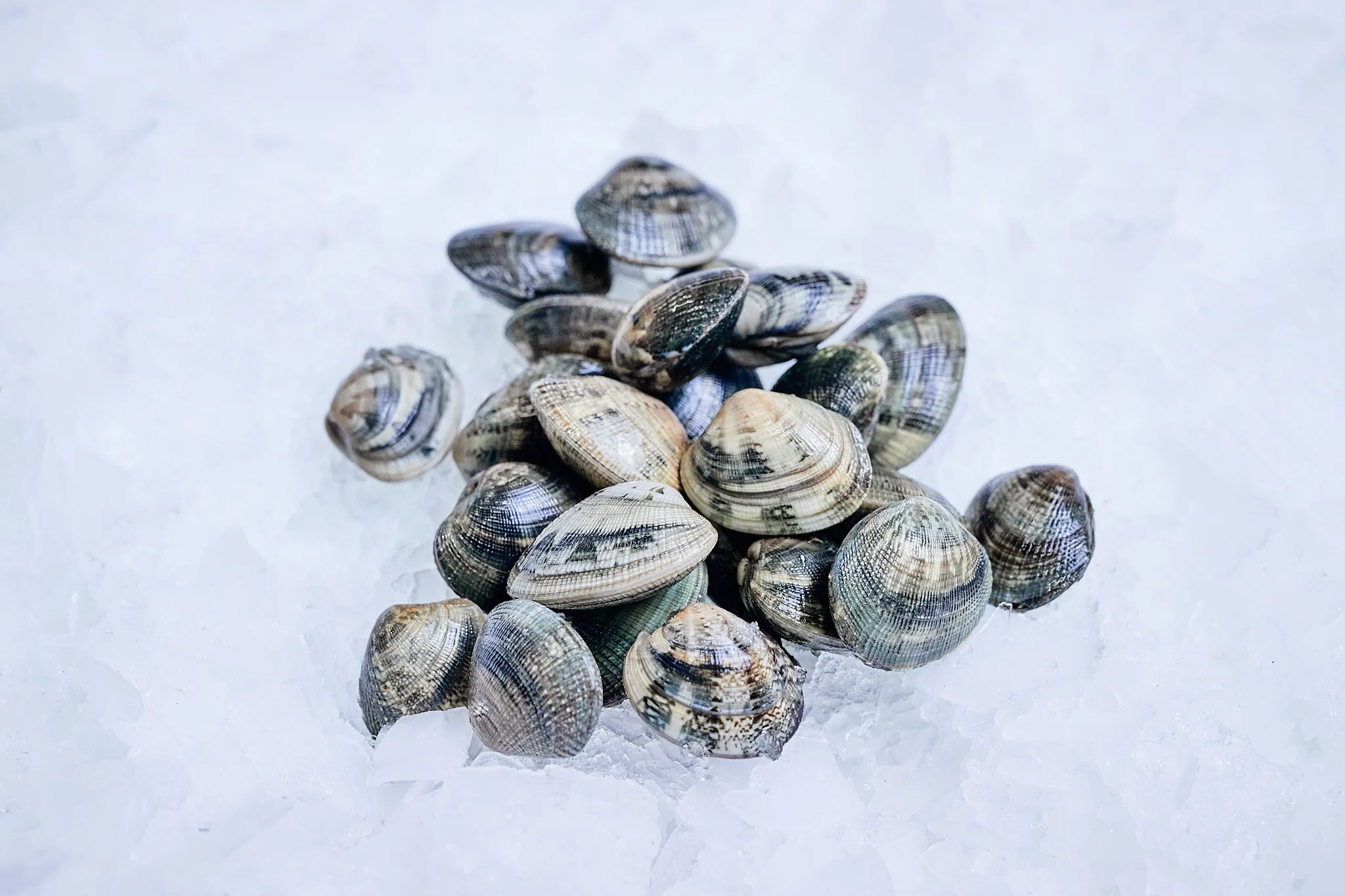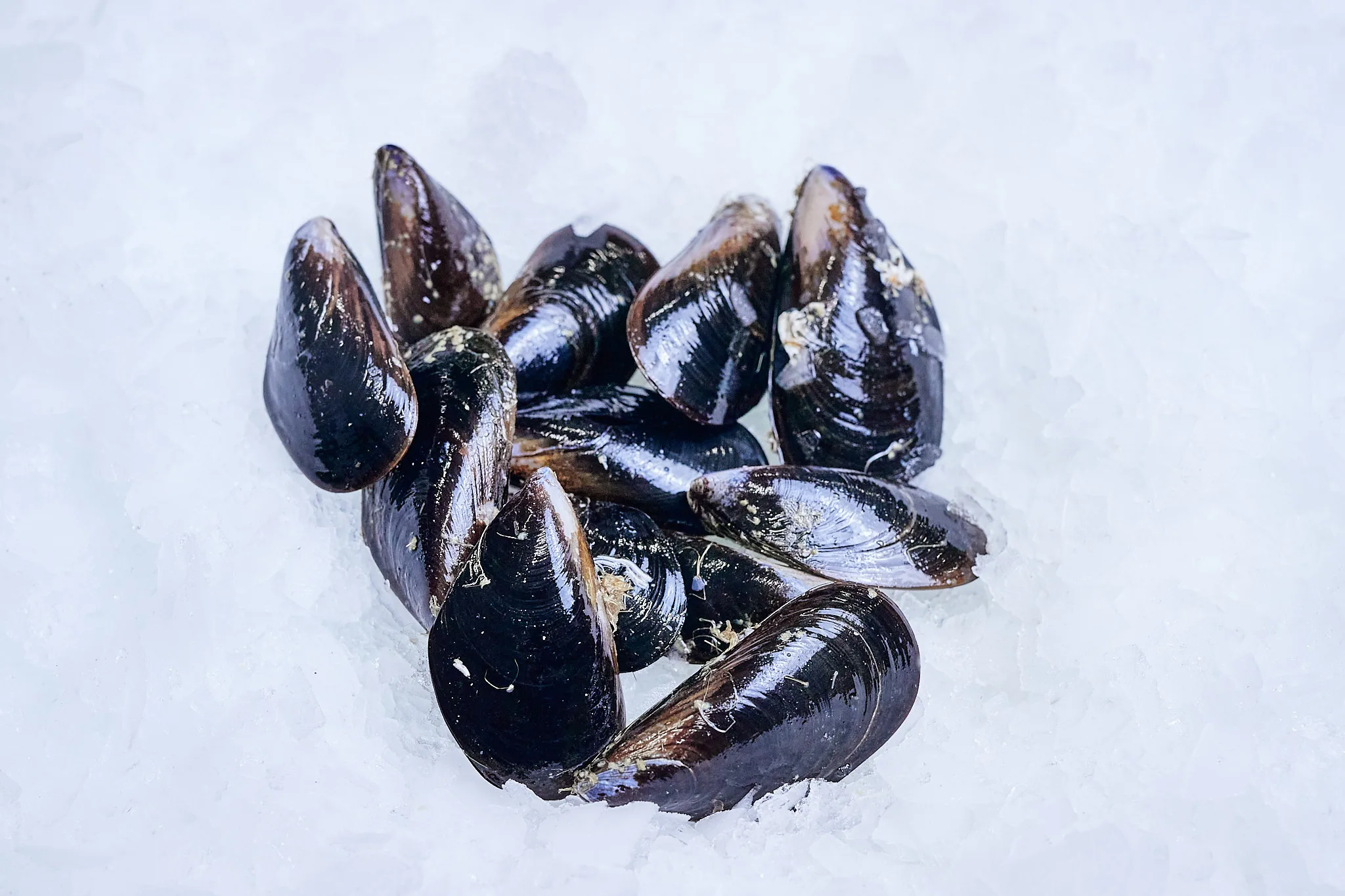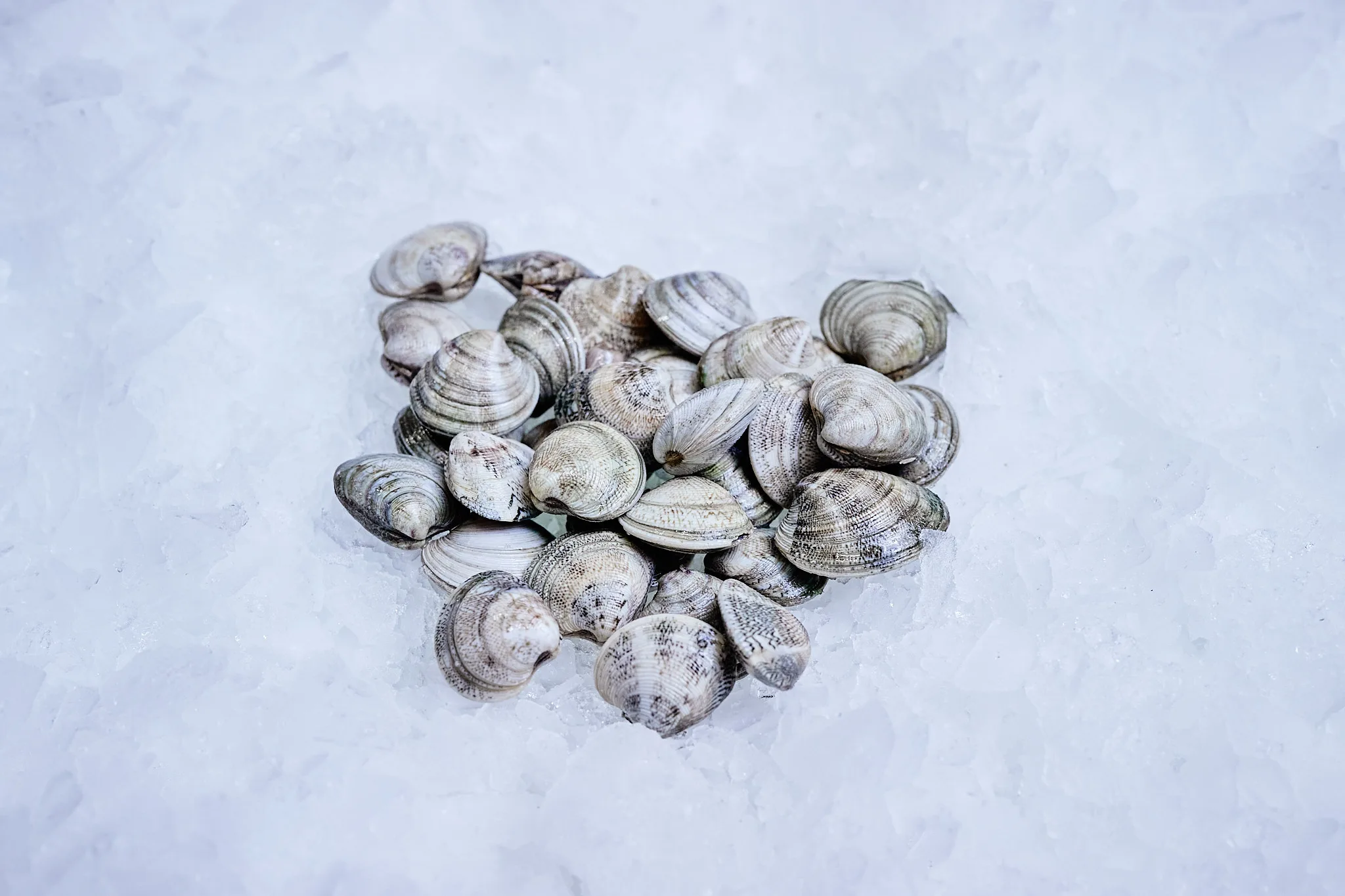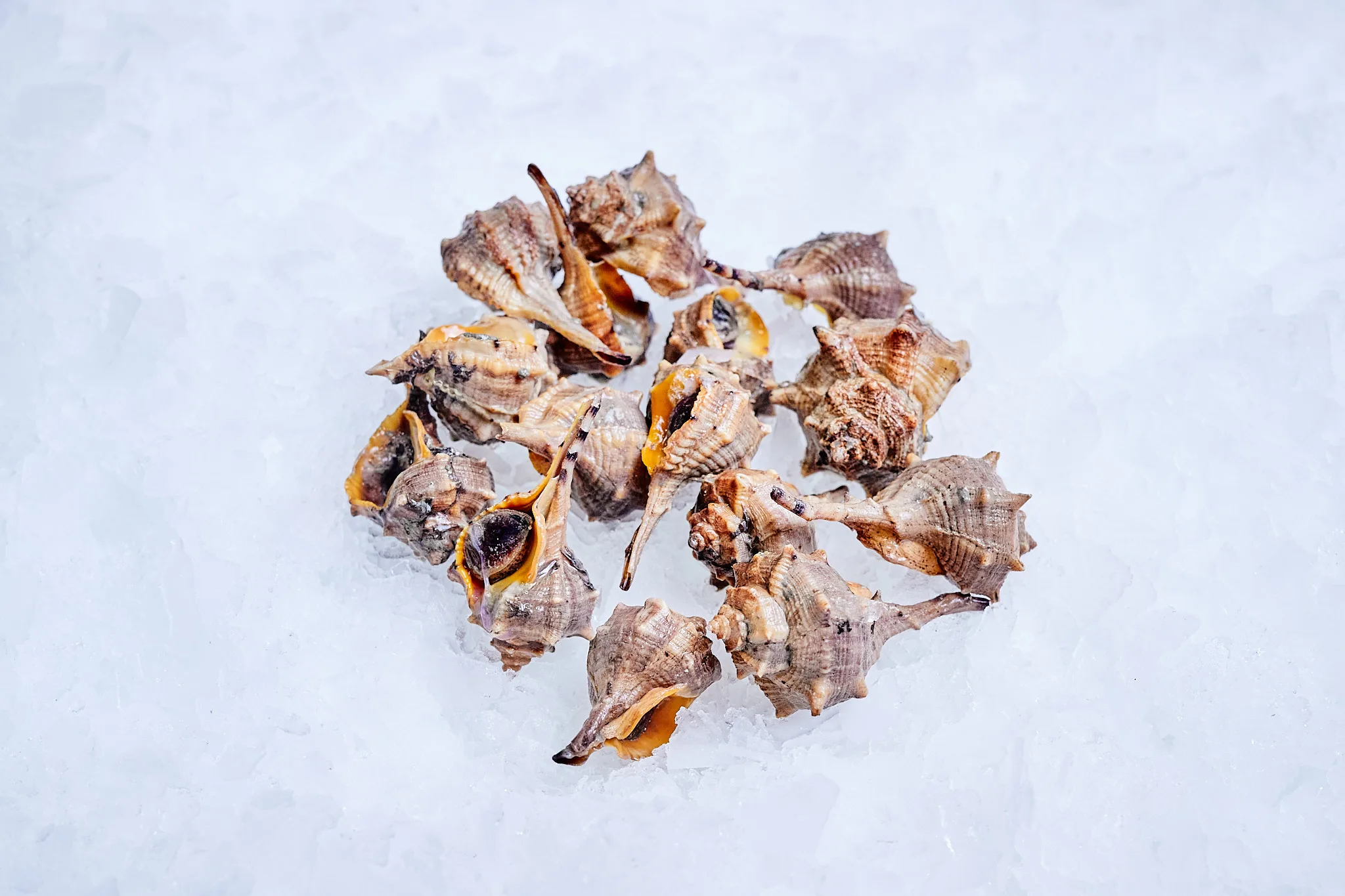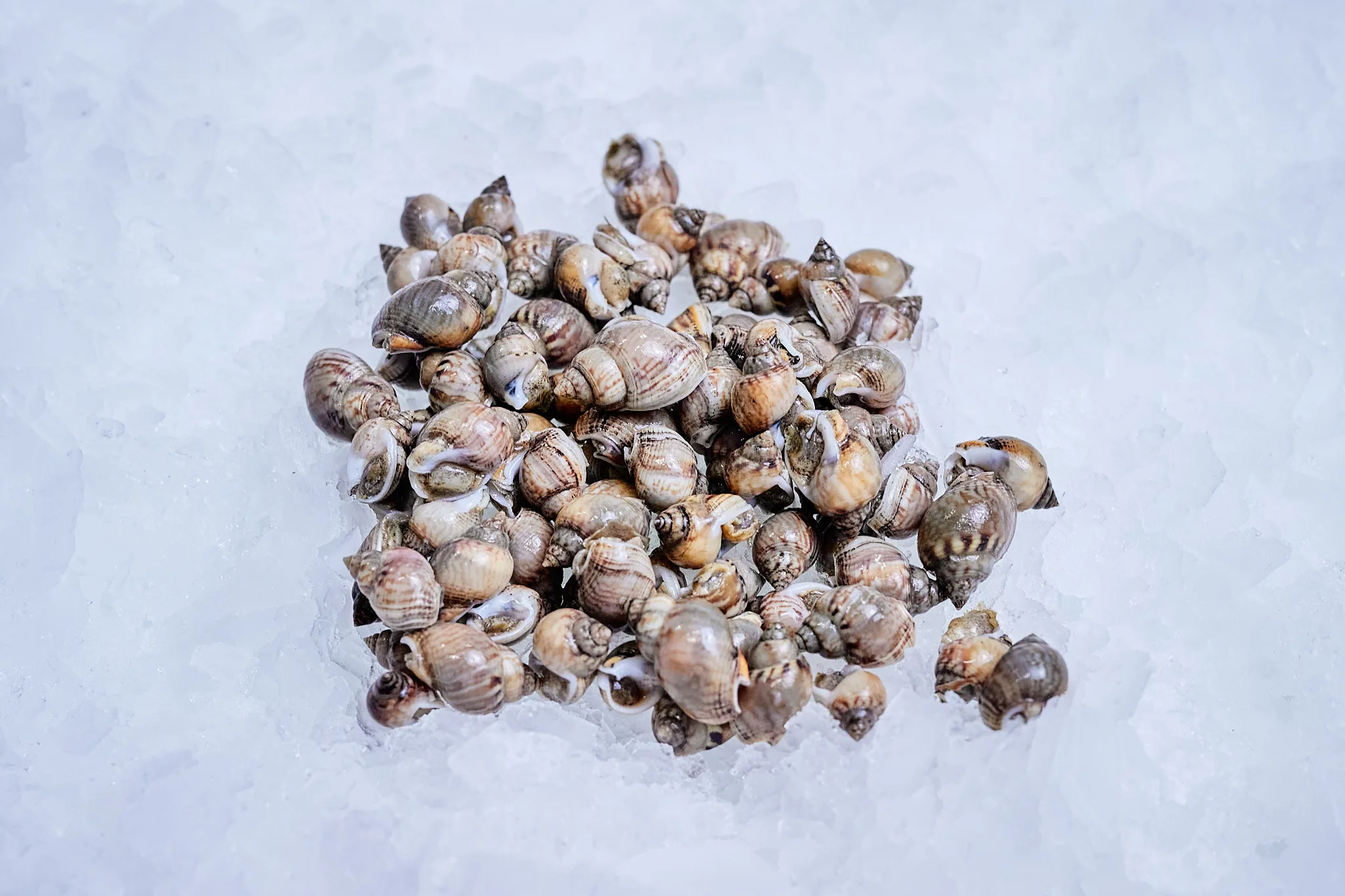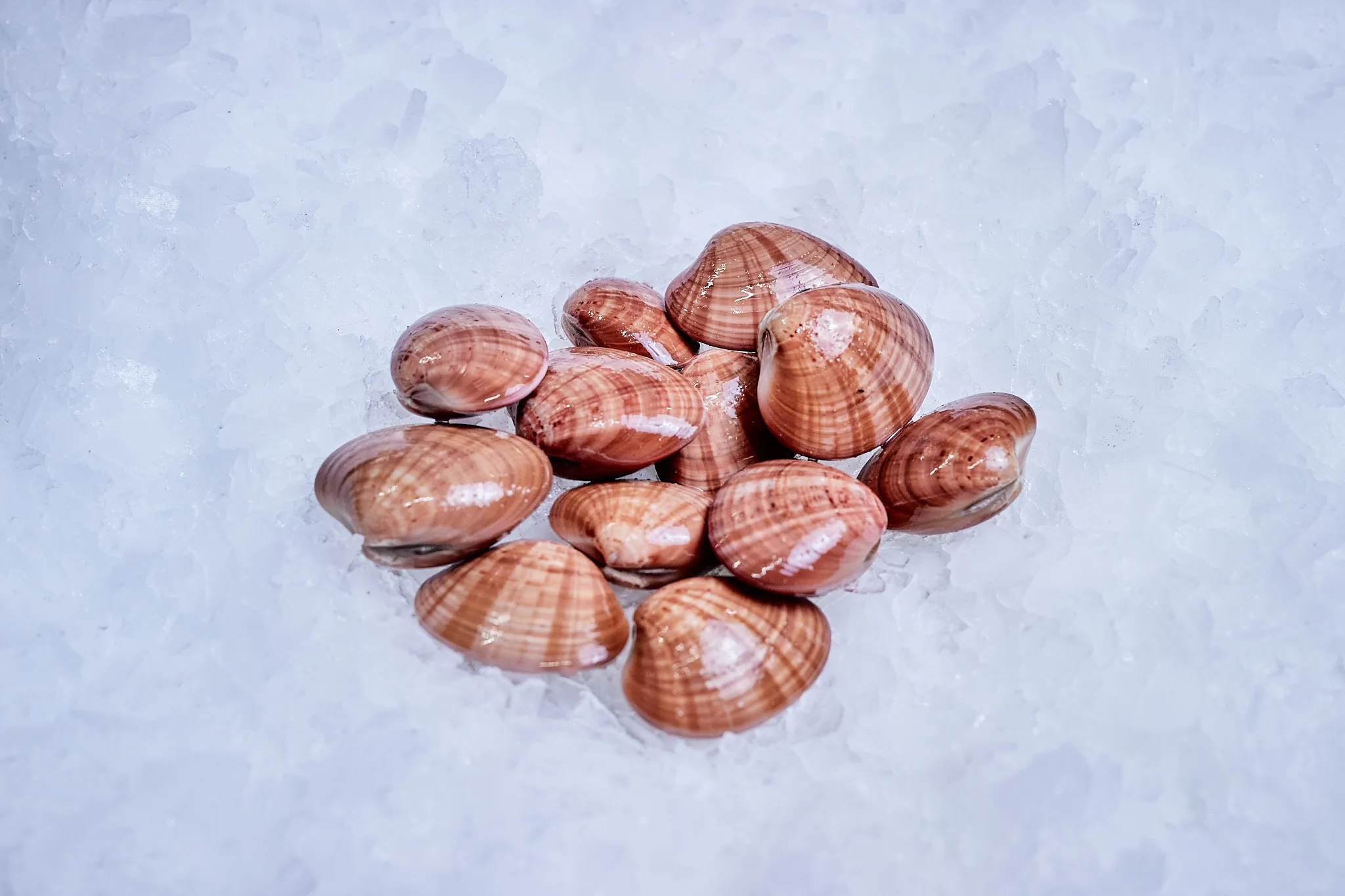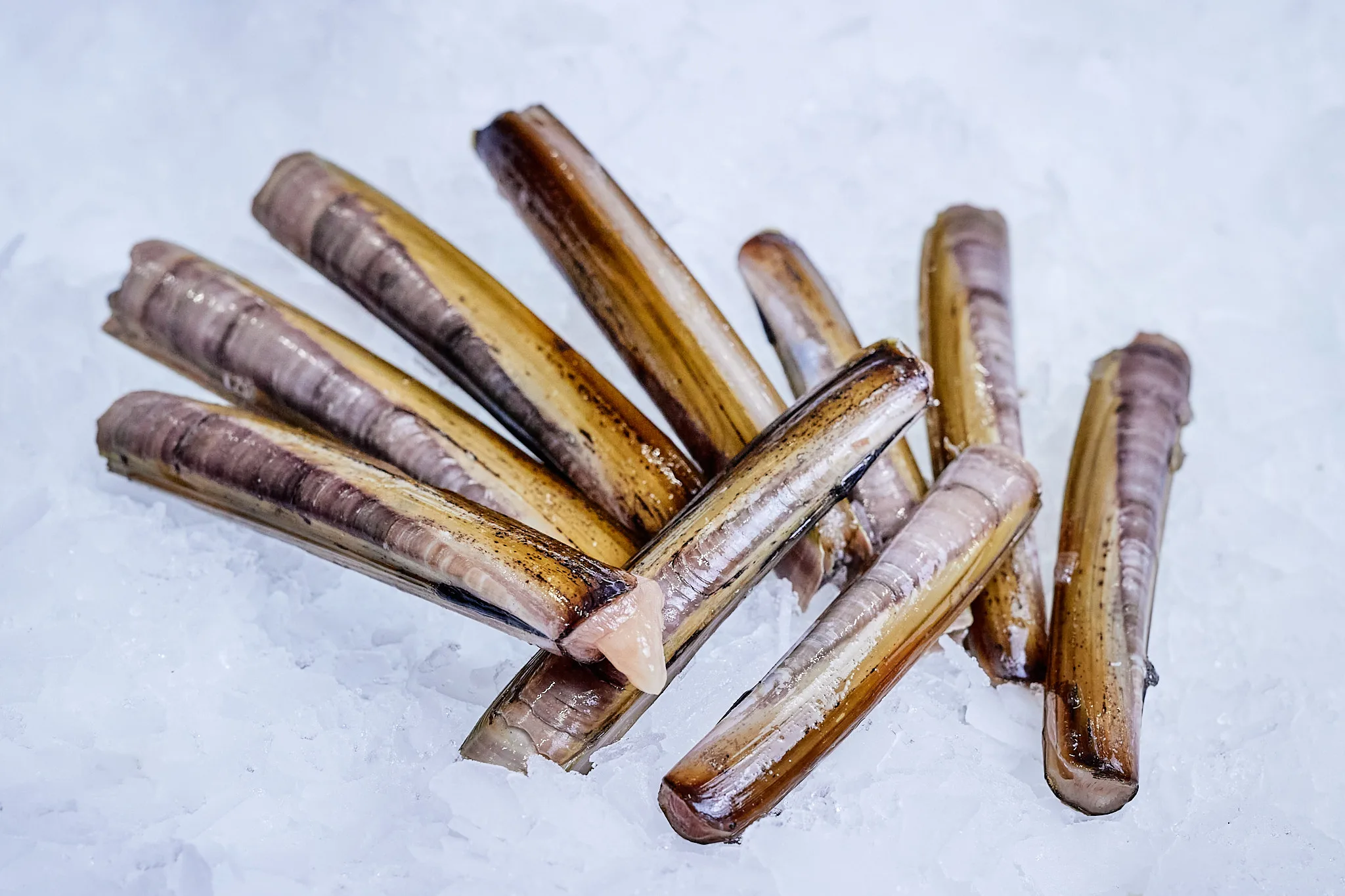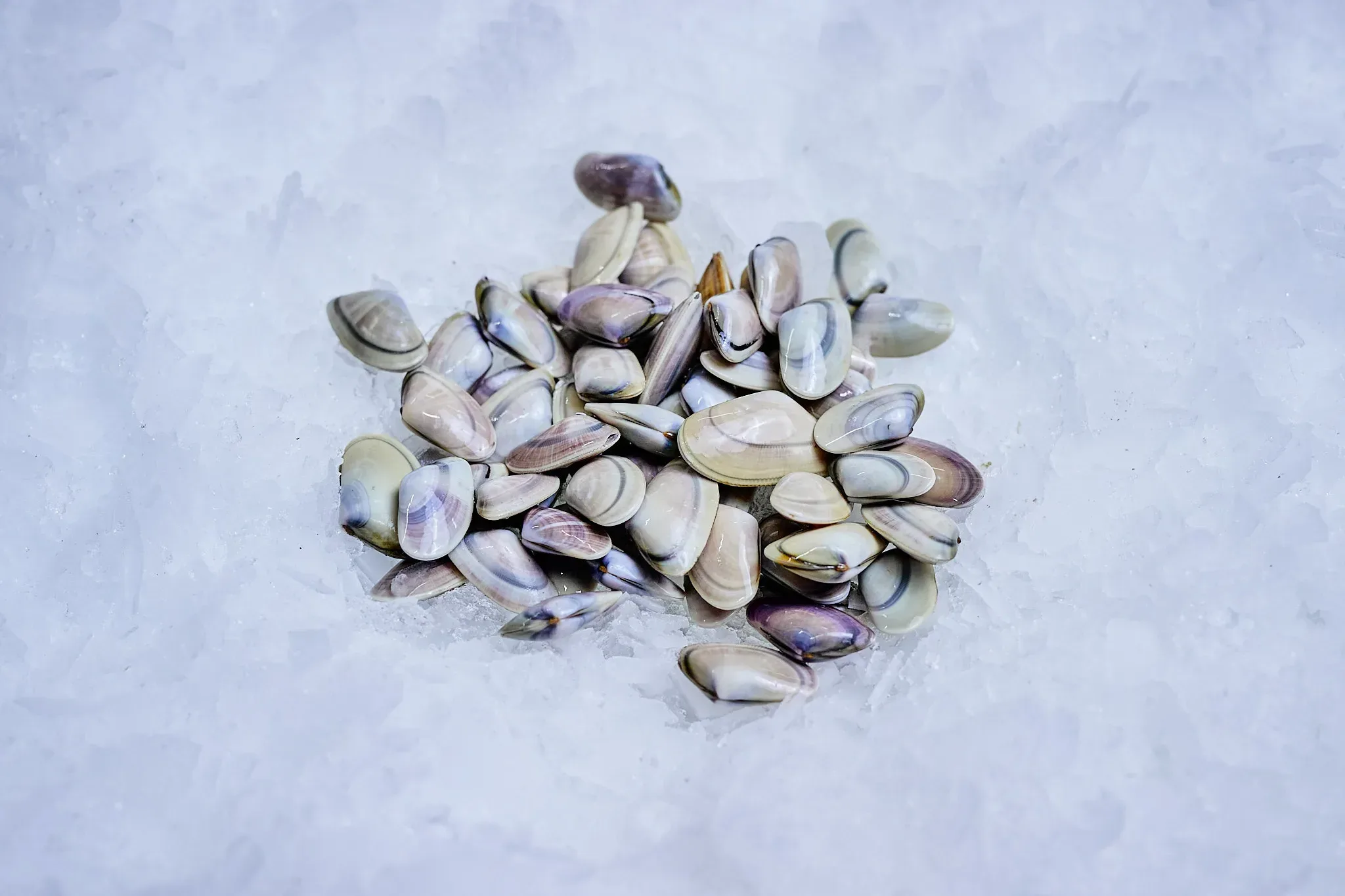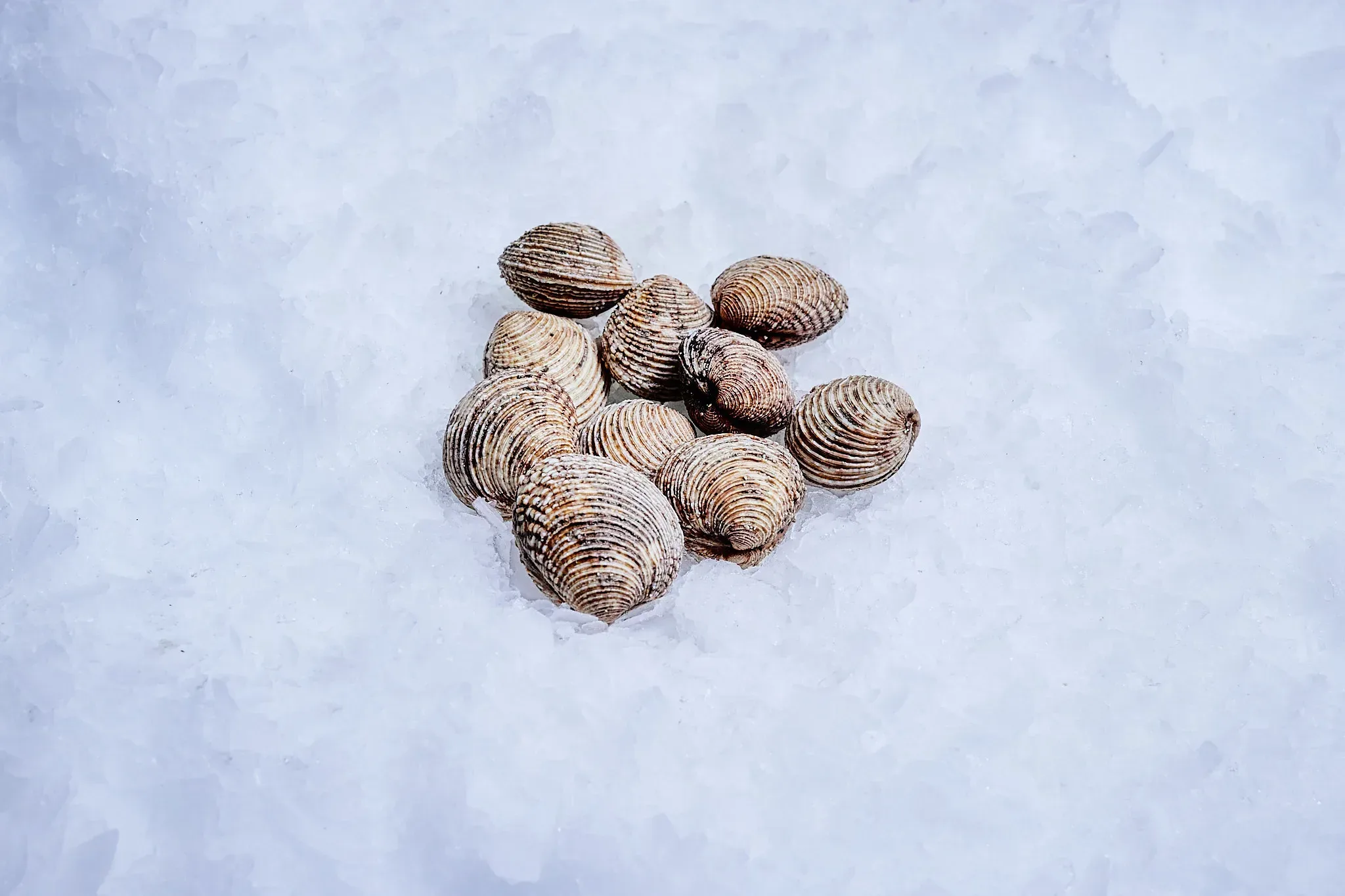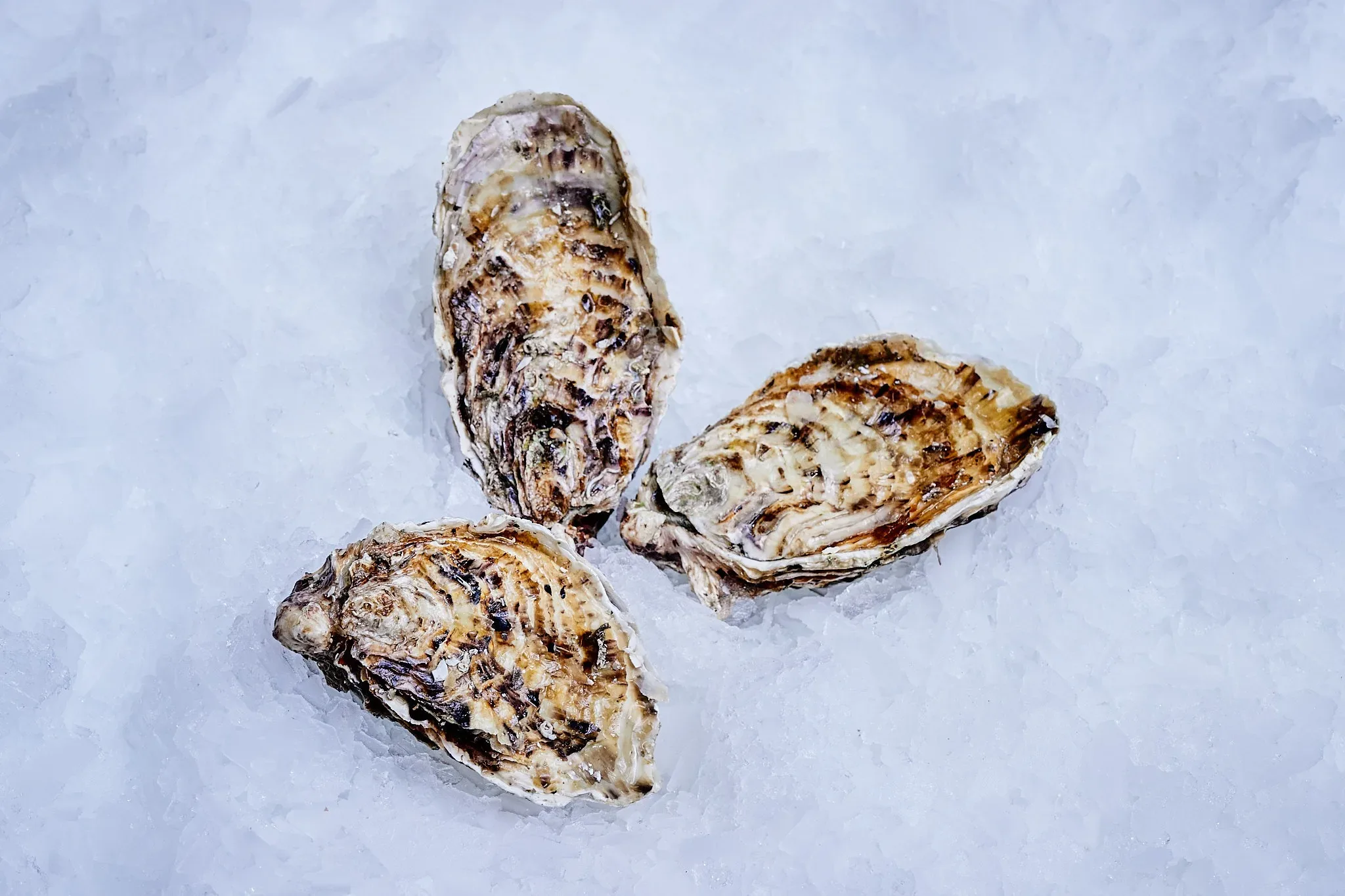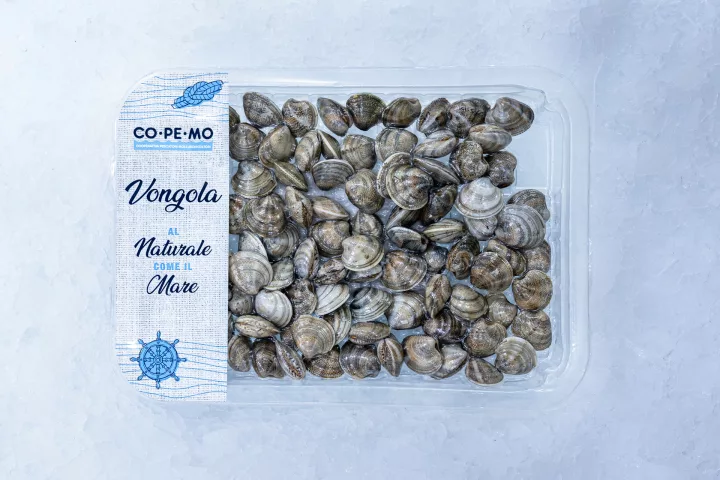Manila Clams
Ruditapes philippinarumManila Clams
- Scientific name: Ruditapes philippinarum
- Sales name: Vongole Veraci
The manila clam is a bivalve mollusk having a robust oval-shaped shell with thin radial striations. The color of the shell varies from white to gray to yellow, up to black for larger clams. The product is bred near the coasts and in coastal lagoons (especially in the Upper Adriatic) and the harvest is carried out manually using a particular tool, similar to a large rake. Portuguese manila clams, on the other hand, are a freely harvested product coming from the waters of the north-eastern Atlantic Ocean, fished by dredgers.
| Origin | Italy, Portugal |
|---|---|
| Fishing season | fishing is done all year round |
| Fishing gear | manual with rake; dredgers |
| Packaging | 0.5, 1 and 5 kg |
|---|---|
| Storage | temperature between +2° and +6° C for live and viable product. |
Chemical parameters provided for by Reg. (EC) 1881/06
| Lead | 1.5 mg/kg fresh weight |
|---|---|
| Cadmium | 1 mg/kg fresh weight |
| Mercury | 0.5 mg/kg fresh weight |
Biotoxicological parameters required by Reg. (EC) 853/04
| PSP (Paralytic Shellfish Poison) | 800 µg/kg |
|---|---|
| ASP (Amnesic Shellfish Poison) | 20 mg/kg of Domoic acid |
| Ac. Okadaico, dinophysis toxins and pectenotoxins | 160 µg of Okadaic acid equivalents/kg |
| Yessotoxins | 1 mg of Yessotoxins equivalents/kg |
| Azaspiracids | 160 µg of Azaspiracid equivalents/kg |
Microbiological parameters provided for by Reg. (EC) 2073/05:
| E. coli | n=5 c=1 m=230 MPN/100g M=700 MPN/100g |
|---|---|
| Salmonella | absent in 25 g |
Odour: characteristic marine
Appearance: regular without epibonds
Colour: high chromatic polymorphism
Meat: delicate and sweetish marine flavor
Energy value: 72 kcal
Proteins: 10.2 g
Carbohydrates: 2.2 g
Fats: 2.5 g
*Bibliographic values
The production process is kept under constant control through the HACCP method and a quality system implemented according to the principles dictated by the IFS Food standard.
Considered an allergen according to the reference directive (Reg. UE 1169/2011 s.m. e i.)
To be consumed after cooking.
Transport temperatures must be maintained between +2°C and +10°C.
The labeling complies with Reg. EU 1169/2011 s.m. e i.
With preformed polyethylene mesh (LLDPE, VLDPE) suitable for food contact or, upon specific customer request, with biodegradable and compostable label and mesh.
Keep in Touch!
To get more information, welcome to contact us at any time. We are here to answer all your questions and requests, and your opinion is of great value to us.
